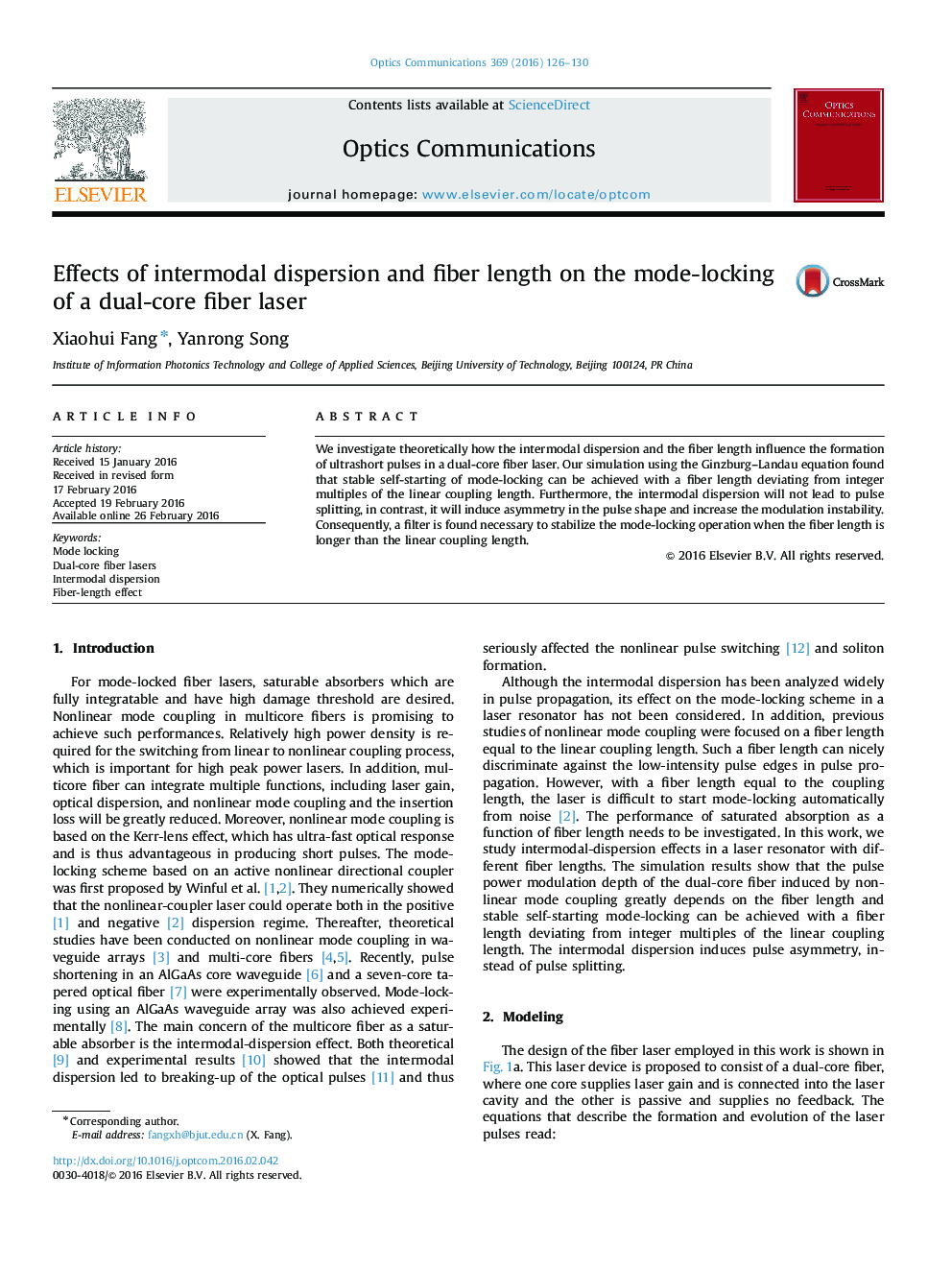| Article ID | Journal | Published Year | Pages | File Type |
|---|---|---|---|---|
| 1533357 | Optics Communications | 2016 | 5 Pages |
•We study the fiber length effect on pulse formation in a dual-core fiber laser.•Pulse evolutions are quite different with a fiber length shorter than, equal to and longer than the linear coupling length.•Previews studies were focused on a fiber length equal to the linear coupling length.•Although intermodal dispersion in pulse propagation was widely studied, its effect on the mode locking scheme in a laser resonator is firstly studied.•Intermodal dispersion induces pulse asymmetry in a laser cavity, which is quite different from the pulse splitting when propagating in a long fiber.
We investigate theoretically how the intermodal dispersion and the fiber length influence the formation of ultrashort pulses in a dual-core fiber laser. Our simulation using the Ginzburg–Landau equation found that stable self-starting of mode-locking can be achieved with a fiber length deviating from integer multiples of the linear coupling length. Furthermore, the intermodal dispersion will not lead to pulse splitting, in contrast, it will induce asymmetry in the pulse shape and increase the modulation instability. Consequently, a filter is found necessary to stabilize the mode-locking operation when the fiber length is longer than the linear coupling length.
